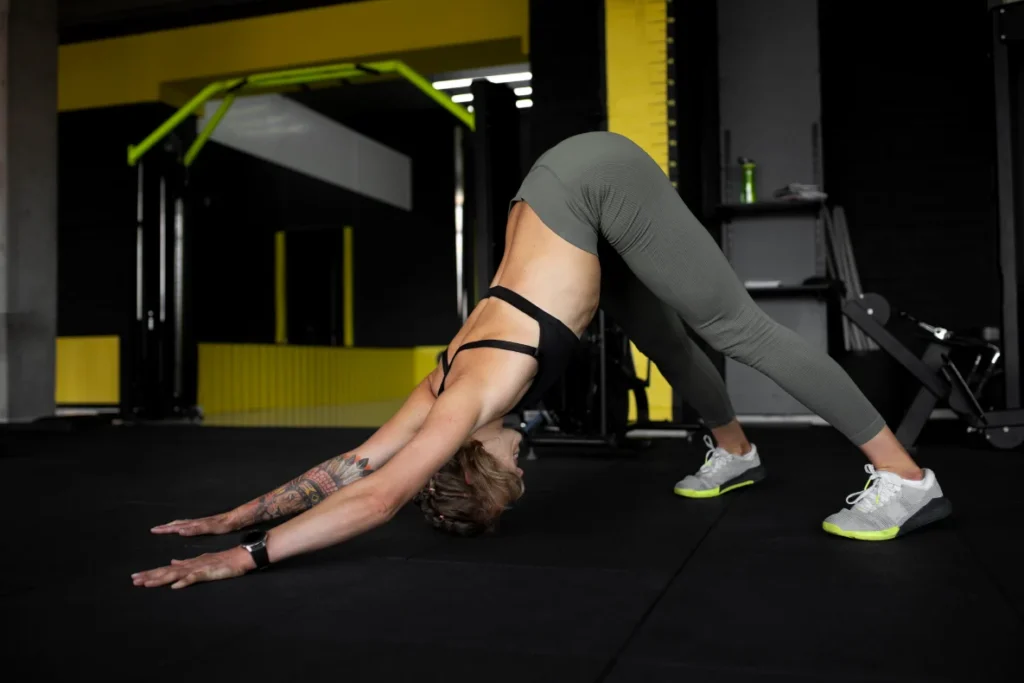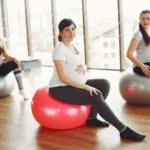Flexibility isn’t just for athletes or dancers; it’s a crucial element of fitness for everyone. Incorporating dynamic stretches into your routine can enhance your muscle function, ease your movements throughout the day, and even elevate your overall health. This article will guide beginners through the basics of dynamic stretching, offering simple yet effective exercises to kick-start your journey toward a more limber body.
What is dynamic stretching
Dynamic stretching involves active movements where joints and muscles go through a full range of motion. These stretches are typically used to warm up before exercise, preparing the muscles for more strenuous activity. Unlike static stretching, where you hold a position for a period, dynamic stretches are performed in motion, which helps to raise the muscle temperature and increase blood flow.
Benefits of dynamic stretching
Dynamic stretching has several benefits that contribute to a healthier, more agile body:
- Enhanced athletic performance: By preparing the muscles for activity, dynamic stretches can improve your speed, strength, and agility.
- Reduced risk of injuries: Regular dynamic stretching increases muscle flexibility and functionality, which helps reduce the likelihood of injuries during workouts or daily activities.
- Improved range of motion: These stretches enhance joint flexibility, making everyday movements easier and helping to prevent the stiffness associated with aging and inactivity.
Before you begin: Understanding your body’s limits
Start by warming up with light physical activity, such as walking or jogging in place, to gently prepare your body. Always listen to your body during stretching; if you feel pain beyond a mild discomfort, you should stop and reassess your technique.
Essential dynamic stretches for beginners
Here are a few dynamic stretches perfect for beginners to incorporate into their routine:
- Arm circles: Extend your arms parallel to the ground and make small circles, gradually increasing the size of the circles. Reverse the direction after 10 seconds.
- Leg swings: Hold onto a stable surface and swing one leg forward and backward. Repeat with the other leg.
- Torso twists: Stand with feet hip-width apart and twist your torso from side to side in a controlled manner.
Upper body stretches
To increase flexibility and reduce tension in the upper body, try the following stretches:
- Shoulder rolls: Lift your shoulders up, then roll them back and down in a circular motion.
- Open book stretch: Lie on your side with knees bent and arms out in front. Open your top arm across your body, turning your head to follow your hand, then return to the starting position.
- Arm cross pulls: Extend one arm straight across your chest, and use the other arm to pull it closer, stretching the shoulder.
Lower body stretches
These stretches target the muscles in your lower body, essential for mobility and stability:
- Forward leg swings: While standing, swing one leg forward and backward, increasing the height gradually.
- Side leg swings: Swing your leg left and right across your body, holding onto a stable surface for balance.
- Walking lunges: Step forward into a lunge, lowering your back knee toward the ground, then step forward with the other leg and repeat.
Core and back stretches
Strengthening the core and back is crucial for overall stability and health:
- Cat-cow stretch: On all fours, alternate between arching your back towards the ceiling and dipping it towards the floor, while gently moving your head to oppose your back’s motion.
- Standing bike crunches: Stand and mimic the motion of riding a bicycle, bringing opposite elbows to raised knees.
- Hip circles: Place your hands on your hips and make circles with your hips, both clockwise and counterclockwise.
If you are a senior citizen who wants better flexibility but find these exercises difficult, here are some low-impact fitness programs designed for seniors.
Integrating Dynamic Stretches into Daily Routine
Incorporating dynamic stretches into your daily life can seem daunting at first, but it’s easier than you think. Here are a few ways to seamlessly add these exercises into your day:
- Morning kickstart: Begin your day with a 5-minute stretching routine to awaken your body and boost circulation.
- Pre and post-workout: Always include dynamic stretches in your warm-up to prepare your muscles and joints for exercise, and cool down to return your body to a state of rest gradually.
- Quick office stretches: Take short breaks throughout your workday to perform stretches at your desk or workspace. This not only helps in maintaining flexibility but also reduces stress and increases productivity.
If you need assistance with improving your flexibility make sure to get in touch with our fitness instructors in Morganton.
Final thoughts
Dynamic stretching is a versatile and effective way to enhance flexibility, reduce the risk of injury, and improve overall physical performance. By integrating these stretches into your daily routine and adapting them to your fitness level, you can achieve and maintain optimal flexibility and health. And once fully stretched, why not try entry-level calisthenics push-ups and dips?





